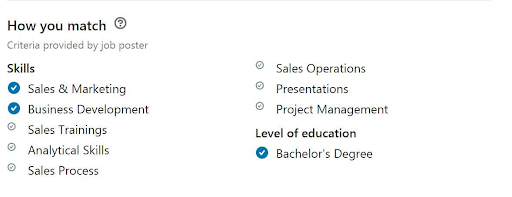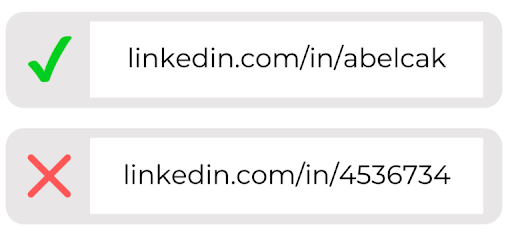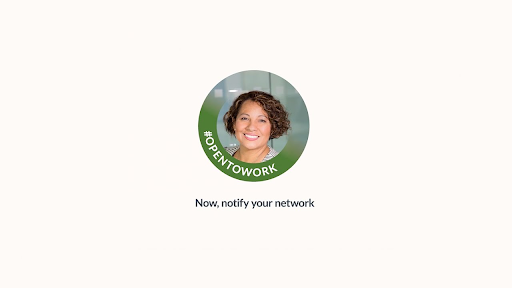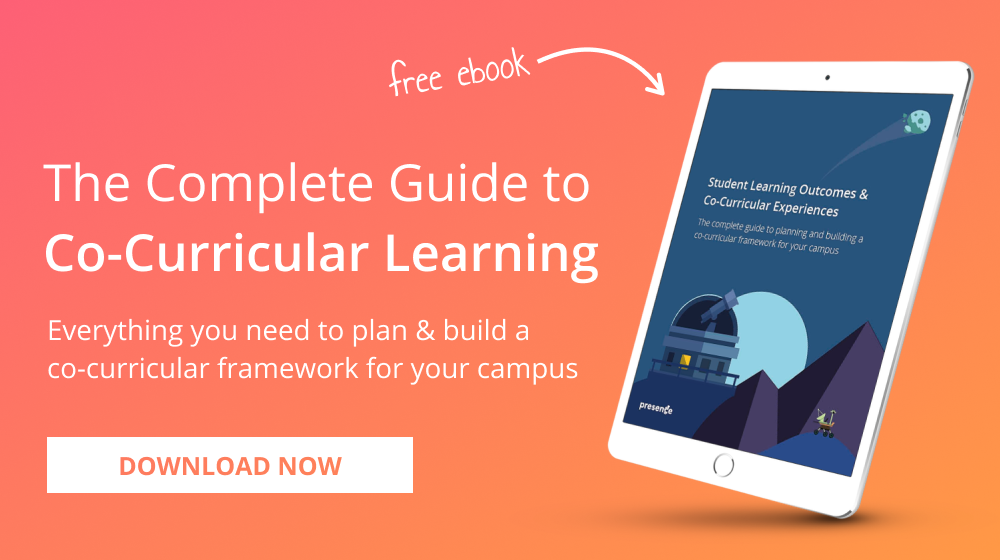You likely already know the impact that having a well-curated LinkedIn profile can have on a job search.
122 million people have received an interview through LinkedIn and 35.5 million have been hired by a person they connected with on the site. Three people are hired through LinkedIn every minute!
So, how can you help students make a jaw-dropping LinkedIn profile that leaves a positive impression on employers?
Here are some of the tips you should pass on to students.
1. Start building a LinkedIn profile as early as possible
In addition to avoiding a last-minute scramble to find a career after graduation, crafting a LinkedIn profile early can help students secure an internship, volunteer, or research opportunity. Continually updating their profile can also help students avoid the risk of forgetting some of their amazing achievements.
2. A professional headshot is essential
Encourage students to take advantage of on-campus headshot photo opportunities. Or, if they must, have a friend take their picture rather than using a selfie. Their profile picture should use strong lighting and be in focus. Students should also wear clothing that fits with the culture of their desired industry and avoid distracting jewelry and bold, patterned clothing. (Here’s a helpful guide on taking a professional headshot with a phone.)
3. Use branding techniques
A student’s LinkedIn cover photo could represent a favorite interest, hobby, quote, or their current city. The photo shouldn’t clash with their profile picture; instead, it should complement other portions of the student’s profile to cumulatively tell their story.
4. Tailor to an audience
Encourage students to have a target audience in mind for their LinkedIn profile. A student looking for a career in computer science should showcase different skillsets and include different industry lingo than a student looking for a social work internship. To find inspiration, students should look at the LinkedIn profiles of professionals in their desired field. They can then mimic industry language and culture.
5. Highlight keywords in the Skills section
Filling out LinkedIn’s Skills & section is critical for students who wish to show up in search results. Profiles with at least five listed skills solicit up to 17 times more profile views. These highlighted skills will populate when students apply to jobs — helping them gauge what job requirements they meet or what skills they aren’t (yet) adequately displaying in their profile.

6. Create a custom profile URL
Anyone can create a custom URL for their LinkedIn profile for free; premium membership isn’t required. Besides being cool, custom URLs look cleaner on resumes and can help recruiters find students more easily. Here’s how to set up a custom URL.

7. Share the URL widely
Encourage students to include their custom URL on their email signature, professional social media accounts, e-portfolios, published work, and of course, their resume. Doing so can help students build connections with future employers and start creating a strong professional network.
8. Become an All-Star
According to LinkedIn, users with All-Star profiles are 40 times more likely to receive job opportunities. All-Stars include anyone with a completely filled-out profile and at least 50 connections.
9. Always include a current job entry
Students may be tempted to leave the Current Job Title field blank, but LinkedIn doesn’t allow that. Such profiles are marked as incomplete and are ineligible for All-Star status. Instead, LinkedIn experts recommend that students — or really anyone who is currently unemployed or underemployed — write in their desired job title and industry. That way, the profile will be searchable to recruiters and the student’s goals will be clear to their connections.
10. Get to 500 connections
While more connections do not necessarily equate to better quality, LinkedIn lists anyone with more than 500 connections as having simply “500+”. This can show recruiters that the student takes LinkedIn and networking seriously, which builds the student’s audience and credibility. Encourage students to connect with past employers, teachers, mentors, professors, club members, SApros, and more. They can also reach out to institutional alumni and family friends, especially those with experience in the student’s desired career field.
11. Use the follow feature
Following someone on LinkedIn allows you to see their posts and articles on your homepage, even if you’re not connected to them. Following can help students familiarize themselves with brand names common lingo in their desired industry. Plus, commenting on and sharing a person’s post can showcase the student’s career interests to potential employers.
12. Solicit endorsements and recommendations
Including skills — both essential and job-specific — is a great way to showcase a student’s abilities to recruiters, employers, and other connections. Skills can be endorsed by the student’s first-degree connections to reinforce their salience. Taking it a step further, a student’s connections can write a recommendation that’ll appear on that student’s profile publically. Recommendations and endorsements are strong ways for students to highlight their abilities and achievements. You should encourage students to reach out to contacts they trust to solicit this public feedback.
13. Share a resume
In addition to including resume-like details on their profile, students should upload their full resumes. That way, recruiters can print out and save the student’s credentials. However, the challenge here is that experiences will ideally match the resume without merely repeating it word for word. Essentially, students should use each experience’s description box on LinkedIn to tell an accomplishment-focused story about the job or project; detailed bullet points can be left to the resume.
14. Use the links and attachments feature
Media files can supplement or complement a LinkedIn user’s experiences. Encourage students to share their photos of completed course projects and link published work from internships. This allows employers to see visual examples of their work.

15. Write a strong summary section
Summaries are a must-have on LinkedIn. Students should use the About box to tell their story from a first-person point of view. The importance of a strong About statement cannot be understated; it’s one of the first things recruiters and employers will read when looking at a student’s profile. You can pass on this list of 10 fantastic summaries to your students.
16. Add an #opentowork photo frame
LinkedIn is the latest social networking site to offer profile frames. The ‘open to work’ frame may particularly be helpful to students who are, well, open to work. In addition to adding a fancy green ribbon to their profile picture, the frame makes it easier for recruiters to find and outreach to students via LinkedIn. Here’s how to use this feature.

I hope that you have found some of these ideas inspirational in revamping your next LinkedIn workshop or in advising students individually.
Have an essential LinkedIn tip that’s not here? Share it with us on Twitter @themoderncampus.






